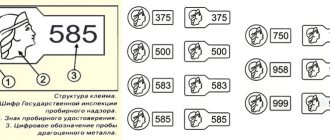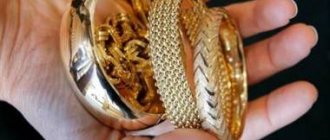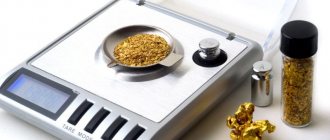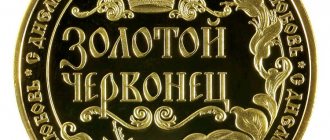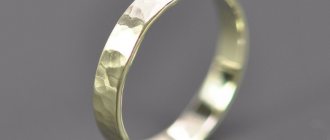Identification of certain metals is an accurate and simple process only if you have special laboratory equipment, a spectrometer in particular. At home, the task becomes much more complicated. It is especially difficult to distinguish between materials that are similar in color and magnetic properties. However, even in such a situation, there are practical methods to distinguish titanium from other metals. The most interesting for comparison are aluminum and steel, including stainless steel. Here, even experienced craftsmen who regularly work with metals and accept titanium scrap are not always able to clearly identify what exactly they have in their hands.
How to distinguish titanium from steel, aluminum
The first pair is non-ferrous and ferrous metals. Most steels have magnetic properties. The exception is alloyed metals of the austenitic class. A striking example is stainless steel with a high nickel content. This grade of steel, like titanium, is paramagnetic. Therefore, the standard option using a magnet is unacceptable here.
see articles:
- Stainless steel scrap - types, descriptions and prices;
- Nickel scrap.
There are three reliable ways to determine titanium at home :
- mathematical;
- graphic;
- abrasive;
- galvanic.
The designations are quite conventional; below we will cover each of the options in detail.
Application of chemicals
Testing with active chemical reagents should be left as a last resort. If handled improperly, they will damage even genuine precious metal. And they can be dangerous for the health of the inspector.
Ammonia
Pure gold does not react to ammonia. But practically no products intended for use are made from gold 900 and 999, only for collections. And on a precious metal of lesser purity, ammonia can leave an irremovable mark. Its solution in combination with other substances is used to clean gold items. Therefore, it is not worth identifying gold and silver items using ammonia.
Platinum products are usually produced with a high purity. Therefore, you can check the authenticity of platinum with ammonia. This chemical will not leave a mark on her.
Nitric and hydrochloric acids
Separately, these acids do not affect high-grade gold and platinum. And if you mix their concentrated solutions in a ratio of 1:3, you get a mixture called aqua regia. It can even dissolve gold. Aqua regia does not “take on” platinum when it is cold. This precious metal will gradually dissolve in the heated mixture.
Oddly enough, royal vodka is not afraid of genuine silver. It reacts to it by forming silver chloride in the form of a thin film on the surface. The latter protects the product itself from destruction.
Pure mathematics
In this approach, metal identification is done by weight. The disadvantage of the method occurs when only one type of metal is available . To determine in your hands that it cannot be made heavier, you have to resort to mathematical calculations. This is facilitated by significant differences in the density of metals:
- titanium – 4.5;
- iron – 7.8;
- aluminum and duralumin – 2.7.
To use this method for determining titanium in your household, you need to have accurate scales.
Parameter values are given in g/cc. It remains to add that the density of steel depends on the specific grade of metal. However, in absolute terms these differences are insignificant. Therefore, the density of steel can be safely taken as the value of a similar characteristic of iron.
All that remains is to clarify the volume and weight of the part or piece of metal. Further, simple calculations will show whether it is aluminum, steel or the desired metal – titanium. How to determine the volume of a part with a complex shape? The best option here is Archimedes' law. The mass of the ejected liquid, when immersing a metal structure, allows you to determine its volume. The situation is simplified by the density of water, equivalent to 1 kg/cubic dm. Accordingly, each gram of ejected liquid is equal to one cubic centimeter of volume.
Of course, this is a tedious, complex and inaccurate method, but in order to determine titanium at home, it has its place.
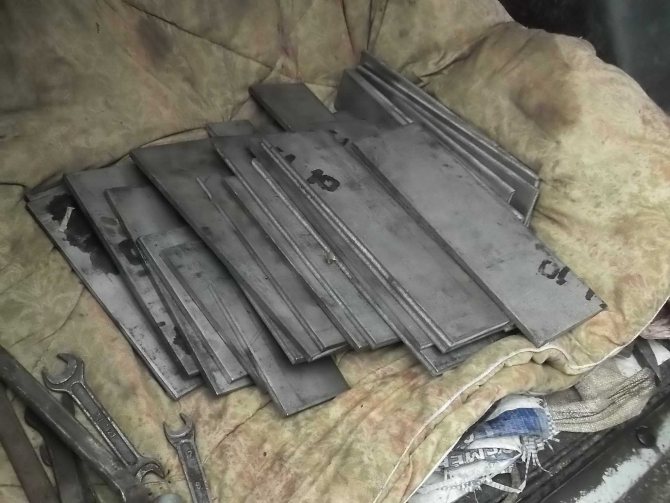
This is what titanium metal looks like
Vinegar test
Household vinegar solution also does not affect precious metals. And it is dangerous for counterfeits. But, unlike the iodine test, acetic acid takes time. To wait for the result, you need to immerse the metal being tested in a container with vinegar for 15–30 minutes. The absence of traces of interaction between metal and vinegar is a sign of nobility.
If, in addition to metal, the product contains precious or semi-precious stones, then it is better not to check them this way; vinegar can ruin them. This is especially true for pearls.
Drawings on glass
This is the most accessible method of how to distinguish titanium at home, but you need to master it and have experience working with titanium. Metal leaves characteristic indelible marks on glass and tiles . It is enough to run the sharpened edge of the metal along one of the specified materials. These are marks, not scratches. Windows of public transport are often painted in a similar way. You can wash titanium graphics on tiles with a solution of hydrofluoric acid; you should handle it with extreme caution.
This method is simple and effective. Titanium, contrary to popular belief, leaves a mark even on dirty glass. So there is no need to degrease its surface. On the contrary, any grade of steel and aluminum can barely scratch the glass. This is an excellent method to identify titanium.
Abrasive wheel
An ideal way to distinguish titanium from stainless steel for owners of a sharpening machine (which, in fact, is not at all necessary). However, almost any abrasive surface will do, even asphalt. The contact of titanium with an abrasive is accompanied by a scattering of rich white sparks. The interaction of steel with an abrasive surface is characterized by a yellow or red tint. There are significantly fewer sparks.
Stainless steel grades are fireproof. Processing of certain brands of stainless steel occurs without sparks at all. This property is used in fire hazardous industries. Only stainless steel tools are allowed there. A similar technique is used in the question of how to distinguish titanium from aluminum. Grinding of the latter on an abrasive wheel also occurs practically without sparks.
This method of determining titanium can be called the most effective - the color of the spark will indeed be different from other metals. In general, the spark test is one of the most popular and correct for determining and recognizing different metals.
Video - how to distinguish titanium from magnesium and aluminum:
Making counterfeits
Before you begin to consider methods for making fake coins, you should know the difference between counterfeit copies and counterfeits. Counterfeit coins are made for further use in monetary circulation. Counterfeits are created with the aim of defrauding coin collectors of money. Often, scammers offer fakes as remakes, but in reality there is nothing in common between them. For reference: a remake is a coin minted based on the prototype of the original coin for collecting. In most cases, remakes are minted with original dies.
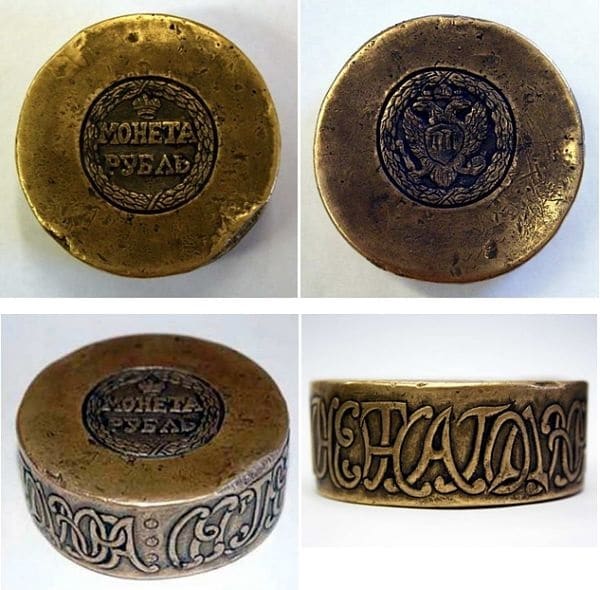
Sestroretsk ruble - original
In Russia, high-quality production of counterfeit coins began in the seventeenth century. But today, counterfeit production methods have improved significantly, making counterfeit coins very difficult to distinguish from originals. The most common methods of making counterfeits include:
- Casting: According to this method, the alloy for casting coins is poured into special molds that accurately imitate the obverse and reverse of the original coin. The use of electrolysis copying technology makes it possible to produce high-quality counterfeits.
- Using a new stamp: for minting counterfeit coins, a new stamp is made that copies the design of the obverse and reverse of the original specimen.
- Production of a galvanoplastic copy: first, copies of the reverse and obverse of the original are made from plastic or plaster. After this, a conductive layer was applied to the finished plates, and copper was deposited on it using the electrolysis method. The plates imitating the obverse and reverse were adjusted to each other and soldered so that the thickness of the counterfeit coin completely coincided with the thickness of the original coin.
- Refinement: According to this method, an ordinary genuine coin is taken and, with the help of special technologies, the necessary adjustments are made regarding the date, name of the mint, etc. There is also the practice of restoring images and dates.
- Copy Coining: In this method, the alloy is cast into a die created by laser cutting tools.
Despite the prevalence of cases of counterfeit coins being sold as originals, copies are also in demand among numismatists. For example, coins of Tsarist Russia made of silver, gold or base metal are very popular among collectors. The most sought-after royal coins are associated with the period from the eighteenth century to 1916. For a silver copy of the coin you will have to pay up to three thousand rubles, but a copy made of plain metal will cost a numismatist about 400 rubles.
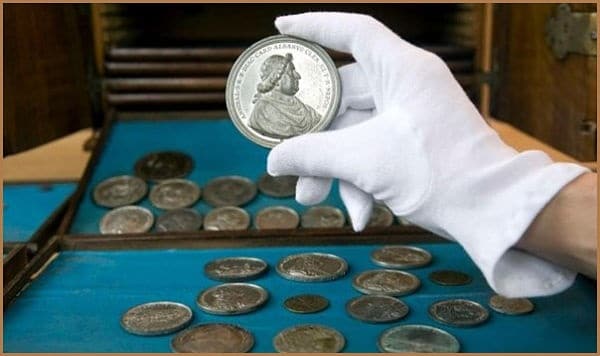
Remake
Galvanic approach
Another sure way to recognize titanium is available right in the garage. The technique is based on coloring this metal through anodization. The simplest design of a “laboratory setup” is a car battery, the plus of which is connected to a titanium plate. A metal rod wrapped in cotton wool soaked in Coca-Cola is connected to the negative of the DC source. The ideal option is any saline solution .
If you run cotton wool over titanium, the metal will become colored within a few seconds. The color obtained during the formation of the oxide film depends on the applied voltage and surface treatment time. However, if the task is how to determine titanium from stainless steel , then the color tone is not important. The main criterion is color change.
Video - how to distinguish titanium from steel using this method:
Iodine test
You can check the authenticity of the metal using an iodine solution purchased at a pharmacy. A drop of iodine is applied to the surface and left for several seconds. Iodine will not harm noble metals - gold, platinum, silver. If the color of a drop of iodine does not change, and after removing it with a napkin, no traces or stains remain, this indicates the authenticity of the metal. If darkening is visible at the place of the drop, then this is a low-quality alloy or an outright fake.
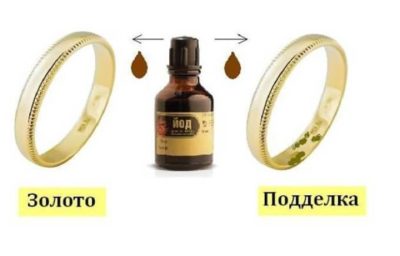
Iodine testing of gold
Other techniques
There are a number of alternative ways to determine titanium in your hands or aluminum, for example. One option is thin shavings. In the case of titanium, it is highly flammable and burns brightly. On the contrary, aluminum shavings melt. When duralumin “metal filings” are placed in an alkaline solution, active evolution of hydrogen is observed.
The next way to distinguish titanium metal from steel and aluminum is thermal conductivity. The numerical values of the parameter W/(m K) for the indicated metals are:
- titanium – 14;
- low carbon steel – 55;
- stainless steel – 16;
- aluminum – 250.
Titanium products are warmer in the hands. Of course, the approach is not characterized by high accuracy, and is generally unsuitable .
Summary
As you can see, even at home, it is quite possible to distinguish titanium from aluminum and steel. The most practical options are spark and glass . For the first case, any abrasive surface is sufficient, even asphalt or hardened concrete. The bright sparkle of titanium is successfully used by bikers by installing horseshoes made of this metal on their shoes. The mark on the glass is beneficial because the metal is not damaged. A relative disadvantage is that some titanium alloys do not leave a pattern. But for pure metal this is the best option.

